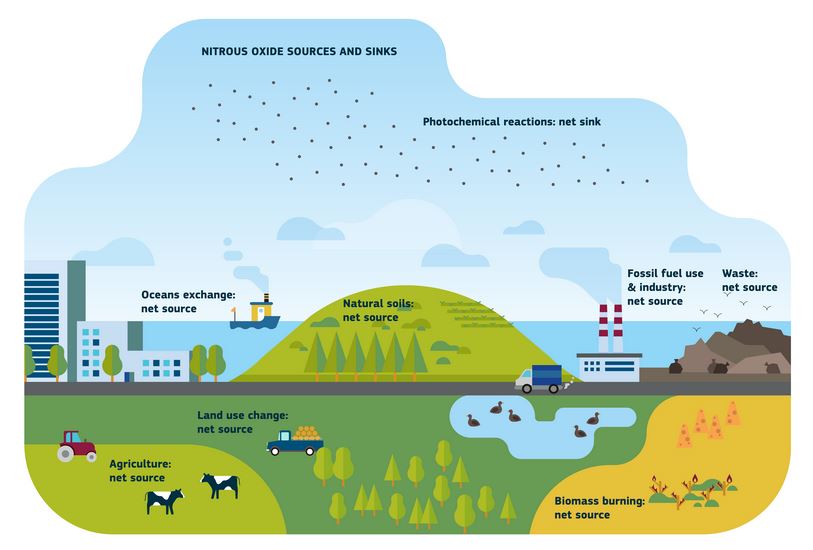Note4Students
From UPSC perspective, the following things are important :
Prelims level: Nitrous Oxide pollution

Why in the News?
- India ranks as the world’s second-largest contributor (after China) to nitrous oxide (N2O), a potent greenhouse gas (GHG), accounting for approximately 11% of global man-made emissions in 2020 as per data published in the journal Earth System Science Data.
- The top five country emitters by volume of anthropogenic N2O emissions in 2020 were China (16.7%), India (10.9%), the United States (5.7%), Brazil (5.3%), and Russia (4.6%).
About Nitrous Oxide
Sources of Emission:
Impact on Climate Change:
Environmental and Health Effects:
|
Global Nitrous Oxide Emissions
- Atmospheric Concentration: The concentration of atmospheric N2O reached 336 parts per billion in 2022, about 25% above pre-industrial levels.
- Next to Carbon Emissions: In comparison, the concentration of carbon dioxide was 417 parts per million in 2022.
- Persistent Lifespan: Once emitted, N2O stays in the atmosphere for longer than the average human lifespan (117 years), making its climate and ozone impacts long-lived.
- Contribution to Climate Change: These emissions are responsible for 6.4% of the effective radiative forcing of greenhouse gases and have added about 0.1°C to current global warming.
- Impact of Nitrogen Fertilizers: N2O emissions from human activities have increased by 40% in the past four decades, with agricultural production using nitrogen fertilizers and animal manure contributing 74% of total anthropogenic N2O emissions in the last decade.
Call for Action and Future Outlook
- Scientists warn that anthropogenic N2O emissions must decline by at least 20% relative to 2019 levels by 2050 to align with net-zero emission pathways consistent with the Paris Agreement.
- Nitrogen fertilizers, which are heavily subsidized in India, contribute significantly to N2O emissions. Urgent reforms are needed to promote alternative production systems and mitigate emissions.
India’s Policy Initiatives to Curb Nitrogen Pollution
- Nutrient-Based Subsidy (NBS) (2010): This policy encourages the adoption of controlled-release fertilizers to enhance nutrient management efficiency.
- Soil Health Cards (2015): Provided to farmers, these cards offer insights into soil nutrient levels and tailored fertilizer recommendations, promoting balanced nutrient application.
- Bharat Stage (BS VI) Emission Standards (2016): These stringent regulations for vehicles and industries aim to reduce the emission of nitrogen oxides and particulate matter, thereby mitigating air and water pollution.
- Nano Urea (2021): Marketed by the Indian Farmers Fertiliser Cooperative Limited (IFFCO), Nano Urea is a patented fertilizer approved for commercial use, designed to curb excessive and indiscriminate conventional urea use while boosting crop yields.
PYQ:[2016] Why does the Government of India promote the use of ‘Neem-coated Urea’ in agriculture? (a) Release of Neem oil in the soil increases nitrogen fixation by the soil microorganisms (b) Neem coating slows down the rate of dissolution of urea in the soil (c) Nitrous oxide, which is a greenhouse gas, is not at all released into the atmosphere by crop fields (d) It is a combination of a weedicide and a fertilizer for particular crops |
Get an IAS/IPS ranker as your 1: 1 personal mentor for UPSC 2024
